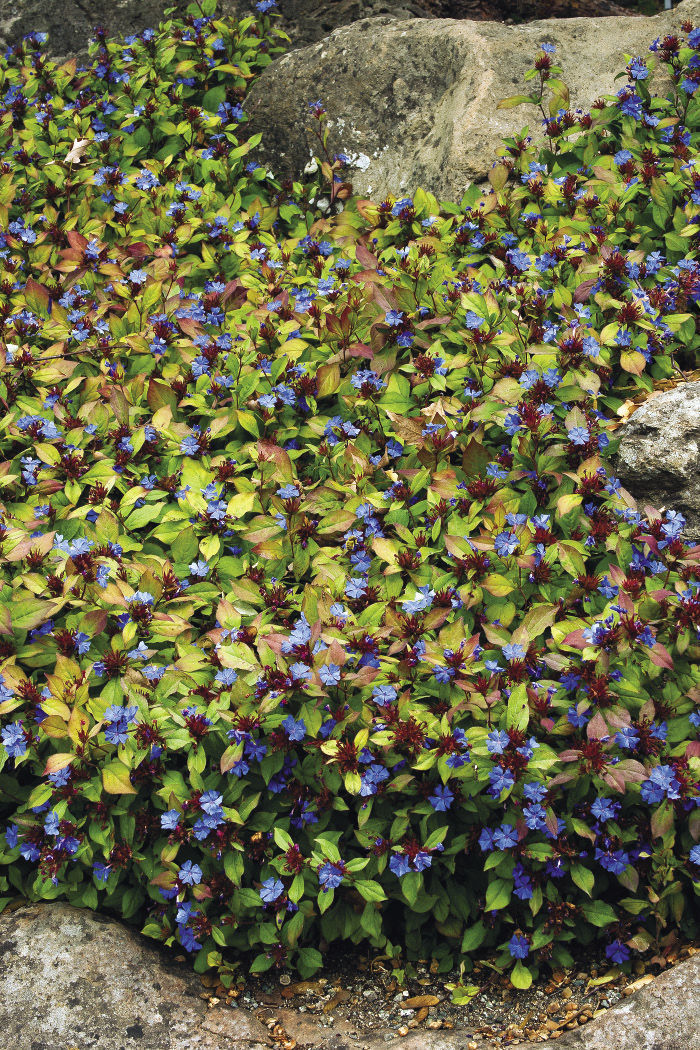
1. Plumbago
Name: Ceratostigma plumbaginoides
USDA Hardiness Zones: 5 to 9
Size: 8 to 12 inches tall, spreading to 18 inches wide
Conditions: Full sun to partial shade; average, well-drained soil
Plumbago is a neat, well-behaved, spreading perennial with clusters of brilliant blue flowers that appear from late summer through fall. It’s an irresistible choice as a ground cover or as a front runner in a border. It also works well spilling over the edge of a retaining wall or container. The foliage turns bronze-red before going dormant in winter. Plumbago is drought tolerant once established. It is a little slow to leaf out in spring, so be patient.
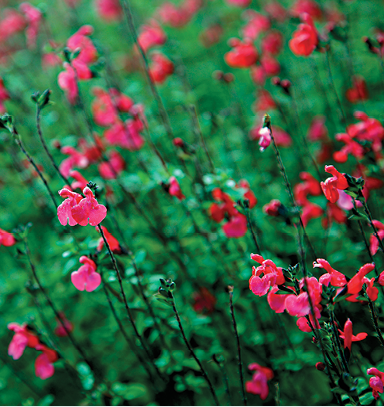
2. Autumn Sage
Name: Salvia greggii
Zones: 6 to 9
Size: 2 to 3 feet tall and wide
Conditions: Full sun; average, well-drained soil
Autumn sage is a heat- and drought-tolerant must-have plant for its consistent flowering. It starts blooming in spring, continues sporadically through summer, then puts on a wonderful display in fall. The plant forms a 2- to 3-foot-tall mound with brightly colored flowers, which attract hummingbirds and butterflies to the garden. Brushing up against the foliage or tidying up by pruning releases a strong sage fragrance into the air. In Oklahoma gardens, autumn sage is evergreen to semievergreen, depending on winter temperatures. Give the plant a haircut in spring to keep it dense and full.
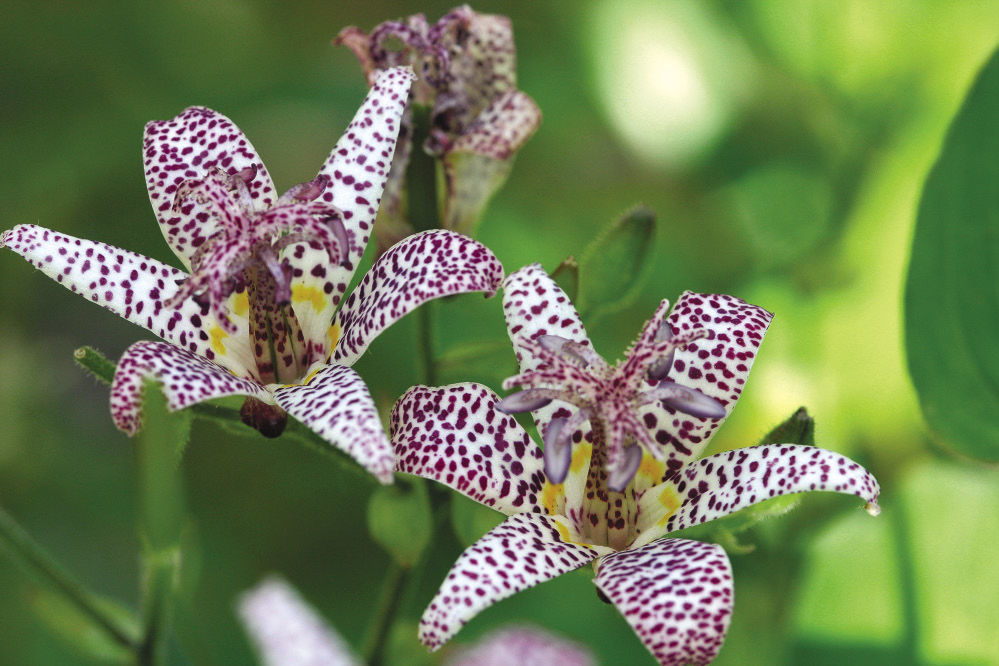
3. Toad Lily
Name: Tricyrtis hirta and cvs.
Zones: 4 to 9
Size: 2 to 3 feet tall and 2 feet wide
Conditions: Partial to full shade; moist, well-drained soil
Toad lily’s pale lilac blooms with dark purple spots appear on upright, arching stems from late summer to early fall, when many other plants are beginning to wind down. Blossoms are small, however, so place the plant in a spot where the flowers can be appreciated up close. Toad lily is excellent for the woodland garden as an understory plant, where it will be protected by shade. It is easy to grow, resistant to deer, and somewhat drought tolerant, though it prefers moist—or even wet—sites.
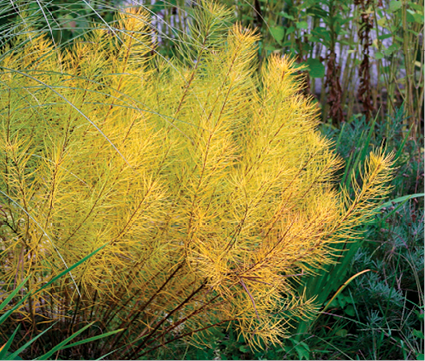
4. Arkansas Blue Star
Name: Amsonia hubrichtii
Zones: 5 to 8
Size: 3 feet tall and 4 feet wide
Conditions: Full sun to partial shade; average, well-drained soil
Arkansas blue star is graceful yet hardy, with superb ornamental qualities. Native to Arkansas and Oklahoma, it performs well under a wide range of conditions, from moist to dry soil, and is drought tolerant once established. Its common name comes from the star-shaped, sky blue flowers that develop in clusters at the tip of each stem in spring. As the plant develops, it forms a large, fine-textured, bright green mound. The real show begins in fall when the foliage turns a brilliant golden yellow that illuminates the garden. This plant is striking when placed in sunny borders, native gardens, or open woodlands.
David Hillock is an assistant extension specialist and the master-gardener coordinator at Oklahoma State University in Stillwater.
Photos: courtesy of Todd Johnson; Doreen Wynja; Martin Hughes-Jones/www.gapphotos.com; Steve Aitken; Janet M. Jemmott




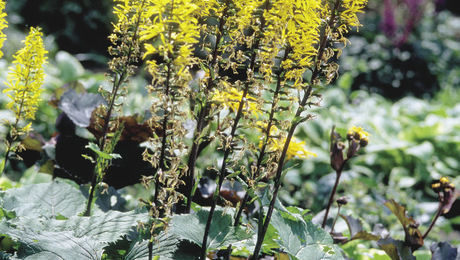












Comments
Log in or create an account to post a comment.
Sign up Log in